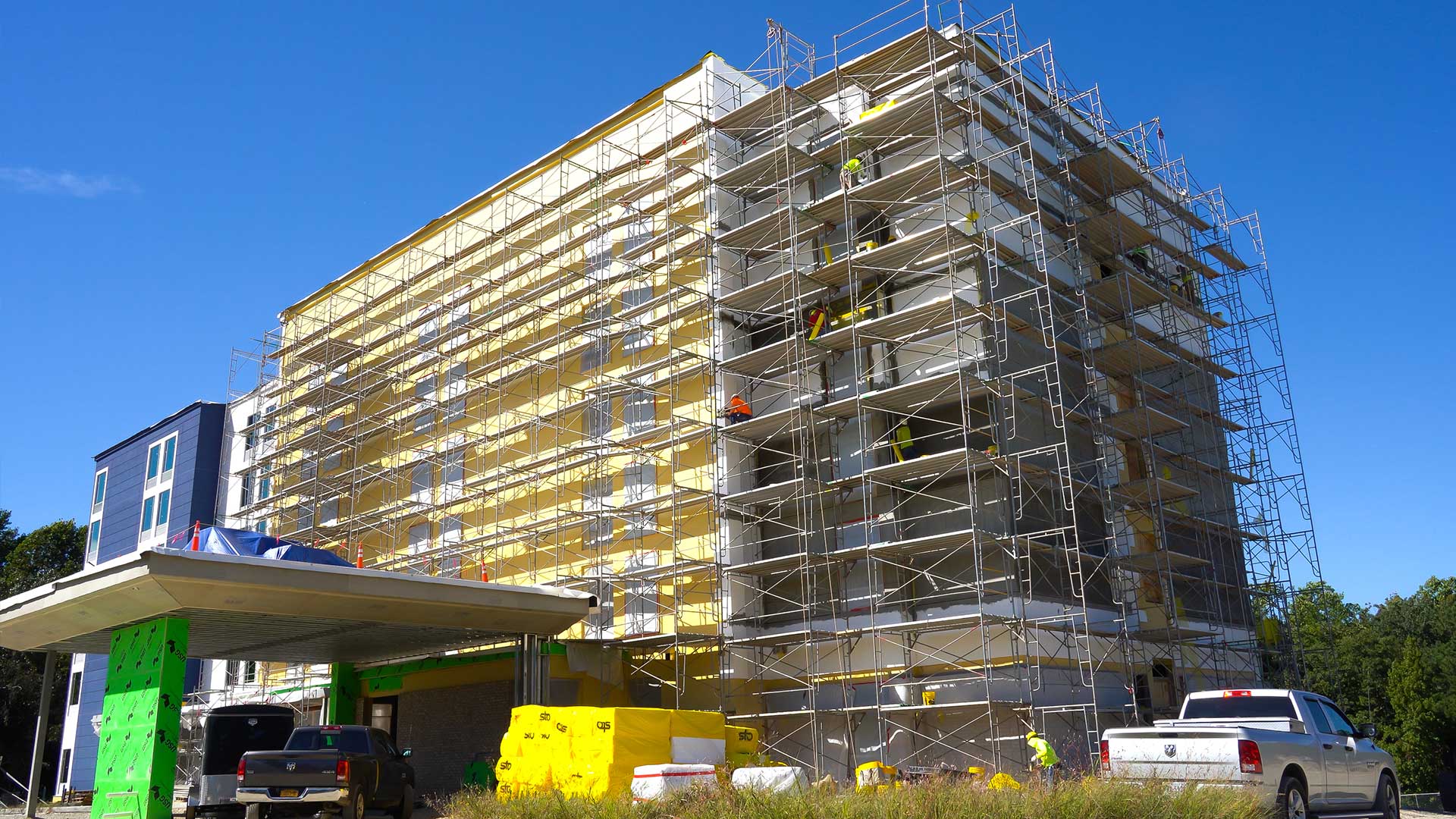
Here are 5 reasons why CFS framing that uses advanced construction automation systems are superior to traditional building methods.
1. CFS Framing is Fast
CFS prefabricated framing construction is faster than traditional methods, especially during the manufacture and construction phases of a project.
CFS fabricators supply frames pre-assembled, resilient, durable, dimensionally stable and clearly identifiable.
- No on-site welding or cutting is normally required
- The erection process is fast and simple
Tooling functions available in advanced construction automation systems, such as what FRAMECAD provides, allow for productive and versatile output of roof trusses, wall frames and floor joists. Framing can be produced to the exact measurements, saving time in the construction stage of a project.
Shorter construction times reduce the hard costs of projects, since building with CFS can take 3 or more months off the schedule of a mid-rise project that uses heavy materials, such as concrete and masonry.
2. Skilled On-Site Labor Not Needed
Highly accurate design and engineering software helps to pre-engineer CFS framing. This in turn allows the fabricator to cut the steel to specified lengths, which can also be labeled and pre-dimpled in the production facility.
- CFS systems assemble quickly and simply
- Workers in fabrication plants need only power drills and fasteners to do their work
Thus, the ease of CFS assembly reduces the need for skilled labor, bringing bottom-line benefits.
3. CFS is Versatile
The strength and ductility of CFS studs and track makes it an ideal building material for all building types — from modular and prefabricated units to multi-story hotels, hospitals, schools and multifamily housing.
“Cold-formed steel is suited to almost any type of building design or application,” says the FRAMECAD content quoted by OH&S. “With one of the highest strength-to-weight ratios of all construction materials, it is possible to produce architectural designs not possible with traditional methods.”
4. CFS Offers a Superior ROI
CFS construction is cost-competitive compared to traditional methods. Depending on the building design, the overall installed cost can be reduced, due to the advantages of CFS in speed of construction, accuracy and reduced labor costs. CFS systems can also deliver a higher ROI over the entire life of a building:
- CFS construction is highly scalable
- CFS is ideal for mass production and repeatable designs
- CFS reduces long-term building maintenance costs, since steel is resistant to rot, mold, termite and insect infestation
5. Steel is Better for the Environment
With traditional construction, it is common for builders to factor in up to 20% material waste in the total cost of a project. Over consecutive projects, that can be the equivalent of 1 building out of every 5 buildings constructed.
However, FRAMECAD says CFS waste can be virtually non-existent — less than 1% of the cost of a project.
- Steel is 100% percent recyclable
- Steel can reduce waste by streamlining the manufacturing and installation process
- CFS is a dry system and does not require water resources, which are need to mix cement and other materials
Thus, CFS construction methods that use advanced automation systems make for faster build times, lower overall costs, more versatile design solutions and better building performance. Combined with other innate characteristics of steel, such as non-combustibility, termite and mold resistance and dimensional stability, CFS offers the framework for a solid, sustainable building program.
Article cited by BuildSteel.org
